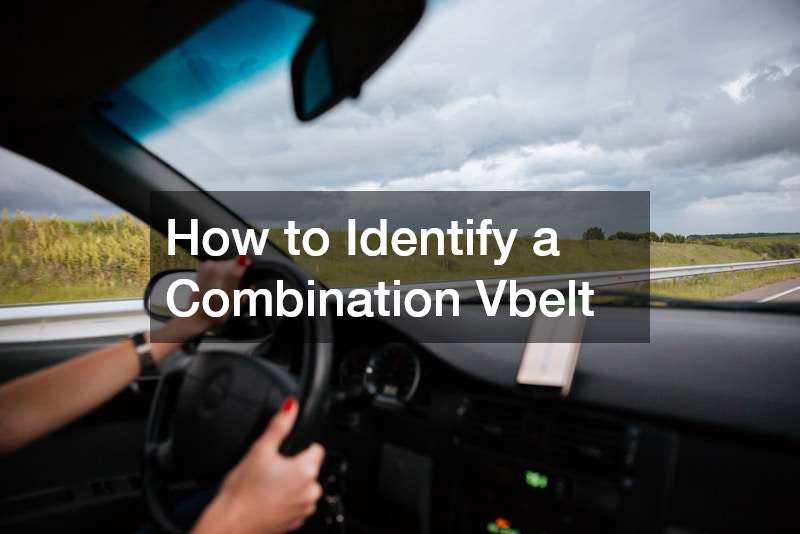This article provides insights into identifying a combination Vbelt, a crucial component in various vehicles. Understanding how to recognize the right type of V-belt facilitates optimal performance and longevity of cars. A combination V-belt plays a vital role in ensuring that power is efficiently transmitted from the engine to other critical components of a vehicle.
What are the characteristics of a combination V-belt?
Design and Structure
Combination V-belts have a unique design differentiated by a blend of features that cater to specialized applications. Unlike standard V-belts, they often incorporate hybrid construction techniques that include different materials and textures.
These belts are meticulously designed to handle specific power transmission requirements, balancing flexibility and strength.
The design frequently involves multiple layers, each serving a distinct purpose such as heat dissipation or enhanced grip. The inclusion of specialized materials like Kevlar or polyester helps increase the belt’s resistance to wear and tear. The construction allows these belts to operate under high tension and resist stretching over time.
Design considerations also include noise reduction and vibration dampening, which are critical for maintaining smooth machinery operation. Often, the belts incorporate molded teeth along with the cross-section for better engagement with pulley systems. This design adaptation is particularly beneficial in applications that demand precise power delivery with minimal slippage.
Size and Dimensions
Accurate measurement of the size and dimensions of combination V-belts is vital for ensuring compatibility with mechanical systems. These belts come in various lengths, and widths, and with varying groove depths tailored to specific machinery needs. The importance of correct sizing cannot be overstated as an ill-fitted belt can cause inefficient power transfer or premature wear.
Exact measurements can be obtained using specialized tools designed for V-belt calibration. It’s essential to account for factors such as tension and stretch which can affect belt performance in the long run. Proper sizing also impacts the belt’s ability to engage correctly with the pulleys, affecting its overall efficiency.
Maintenance personnel are advised to regularly verify belt dimensions, especially after several cycles of operation. This proactive approach assists in recognizing any stretching or deformation, ensuring the longevity of the belt and the associated machinery. Regular checks help identify any need for adjustments, thereby minimizing machine downtime.
Material and Durability
Combination V-belts are crafted from materials selected for enhanced durability and reliable performance under demanding conditions. Materials such as chloroprene, polyurethane, and aramid fibers are common due to their excellent resistance properties. These materials provide the necessary tensile strength to handle fluctuating loads without compromising the belt’s structural integrity.
The choice of material also dictates the belt’s resistance to environmental factors such as temperature extremes, oil, and chemicals. For instance, some combination V-belts are designed with enhanced heat resistance for use in high-temperature applications like industrial ovens. This versatility makes them ideal for use in diverse environments where standard belts may fall short.
Durability is further enhanced by incorporating reinforcing layers or fibers within the belt structure, providing added resistance to fatigue and stretch. This construction enables the belt to maintain its shape and effectiveness over an extended period, reducing the frequency of replacements. Consequently, selecting the right material composition is critical to prolonging the service life of the belt.
How do you determine the right type of V-belt for your car?
To determine the right type of V-belt, one must analyze the specific application requirements it must satisfy. Considerations include the load the belt must carry, the speed at which it will operate, and the environmental conditions it will encounter. This analysis helps ensure the selected belt can perform efficiently and withstand operational stresses.
Matching the belt to the application’s horsepower and torque demands is crucial for avoiding slippage and wear. Environmental factors such as exposure to heat, dust, moisture, or chemicals also dictate the choice of belt material. Additionally, understanding the machine’s cycles and duty type can guide you in selecting a belt that won’t fail prematurely.
Careful evaluation of these application specifics ultimately contributes to optimal machinery operation. It reduces the risk of unexpected downtime caused by belt failure. Properly selected belts achieve effective power transmission, resulting in better overall performance and efficiency for the vehicle or machinery.
Identifying a combination V-belt requires attention to its characteristics and the needs of the machinery. By examining design, size, application requirements, and consulting experts, the right V-belt can be selected to ensure efficient and reliable performance. This comprehensive approach ensures prolonged machinery lifespan and consistent operational efficiency.
.

